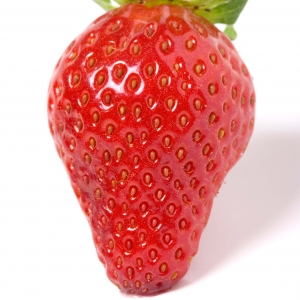
Dr. Kevin McKerrow
DERMATOLOGIST
+ SEE BIO
Rosacea is a chronic rash that typically begins with flushing and blushing of the cheeks and nose and progresses to persistent facial redness, broken facial blood vessels and inflamed pimple-like bumps. More advanced cases can progress into rhinophyma, in which the oil glands of the skin become enlarged, making the nose larger and the cheeks puffy. About 50% of patients have eye involvement (ocular rosacea) which causes dryness, burning and grittiness of the eyes.
Type 1: Flushing and persistent redness with visibly enlarged capillaries (telangiectasia). This type of rosacea is usually the least severe and may be accompanied by enlarged sweat glands, oiliness and/or dry and flaky skin. The skin may become sensitive with a burning and stinging effect when it comes into contact with make-up or facial creams, or with sun exposure and/or consumption of spicy food.
Type 2: Persistent redness with transient bumps and pimples is papular rosacea. Papular rosacea is usually seen on a background of flushing and persistent redness and is characterised by the formation of lumps, pimples and pustules.
Type 3: Eye irritation (ocular rosacea). Ocular rosacea is the term used to describe rosacea when it involves the eyes, typically causing redness and grittiness in the eyes. The eyelids may show redness and scaling.
Type 4: Skin thickening, often resulting in enlargement of the nose (rhinophyma). This sub-type of rosacea presents as overgrowth of the oil glands, usually on the nose and sometimes is associated with significant disfigurement.
There are a range of treatments available, and treatment regimes are customised to each individual to stop the progression of the disease. Education on avoidance of triggers is also important. Things that trigger flushing are known to worsen rosacea and triggers can vary from individual to individual. Common triggers of rosacea include spicy foods, hot drinks, caffeine and alcoholic beverages and certain foods such as bananas, cheese, yoghurts, figs and nuts.
Rosacea is also provoked by excessive sun exposure, which must be avoided with the use of a broad-spectrum sunscreen (SPF 50) and by wearing a wide-brimmed hat or generally remaining sheltered and avoiding extreme temperatures. (Exercise in a cool environment. Do not overheat and protect your skin from the cold and the wind).
Additionally, rosacea can worsen when exposed to abrasive scrubs. Because of skin sensitivity, topical skincare treatments should include soap-free cleansers, gentle emollients and light foundations. Mineral based make-up can be used and products to avoid are cosmetics and skincare products with toners, alcohol or irritating ingredients. Heavy foundations and cosmetics that are hard to remove, such as oil-based facial creams, are also not recommended. Under no circumstances should topical steroids be used to treat rosacea.
Flushing and persistent facial redness can be treated with laser or intense light based treatment. At the Skin Specialist Centre we have several different laser and light systems, each with its own specific benefits. Treatment is based on the individual requirements and our equipment includes Candela VBeam Perfecta pulse dye laser, Cutera Excel V, Gemini long-pulsed KTP and Yag laser and Sciton BBL light device. For papular rosacea the firstline treatment for this is systemic antibiotics, which are usually prescribed daily, often in conjunction with creams and gels. For ocular rosacea oral antibiotics can be useful and where they are not successful, referral to an ophthalmologist (eye specialist) is required.
Rhinophyma is a form of severe rosacea, relatively common in the New Zealand male population. In most cases it develops in the late forties and worsens with time. Mild cases present as uneven lumps and bumps of tissue on the nose and in more severe cases, the nose and adjacent areas of the face show a thickened over-growth of tissue. Depending on the severity of the rhinophyma, we use a variety of methods to correct the deformity. Moderate deformity is treated with the Smart Xide Dot laser. This laser, aided by the skill of the specialist dermatologic surgeon, also re-shapes the nose, removing excess tissue with each pass.
Rhinophyma removal treatments are very successful and in all cases will significantly correct the underlying deformity. The majority of cases require only one treatment. Touch-up treatments are occasionally performed for optimal results with the Candela VBeam laser. Distortion of the nasal shape is treated very successfully with the carbon dioxide laser (Smart Xide Dot laser). Often systemic antibiotics are usually necessary to maintain improvement.
Rhinophyma is one of the most debilitating and deforming conditions for men, and is certainly a source of embarrassment, both physically and emotionally. Recovery varies but, on average, is 14 – 28 days, during which time patients must limit their work and social activities. For the majority of patients, this is fortunately covered under medical insurance.